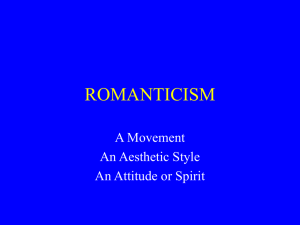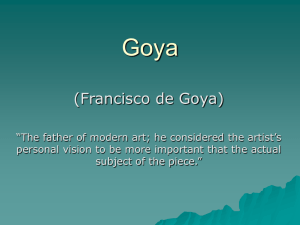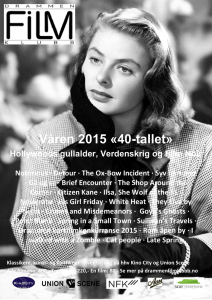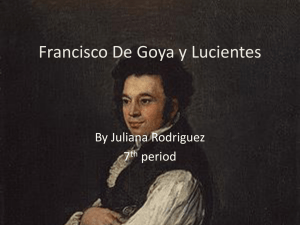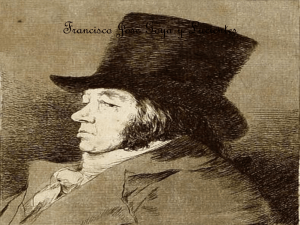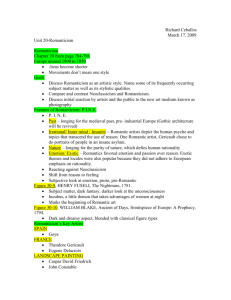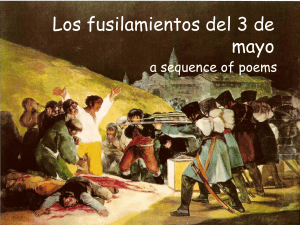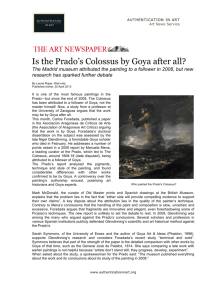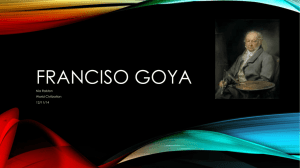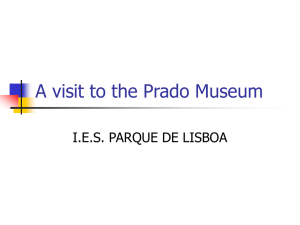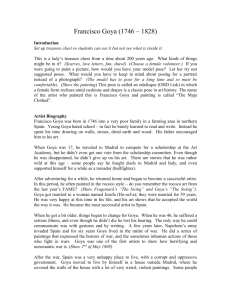File
advertisement
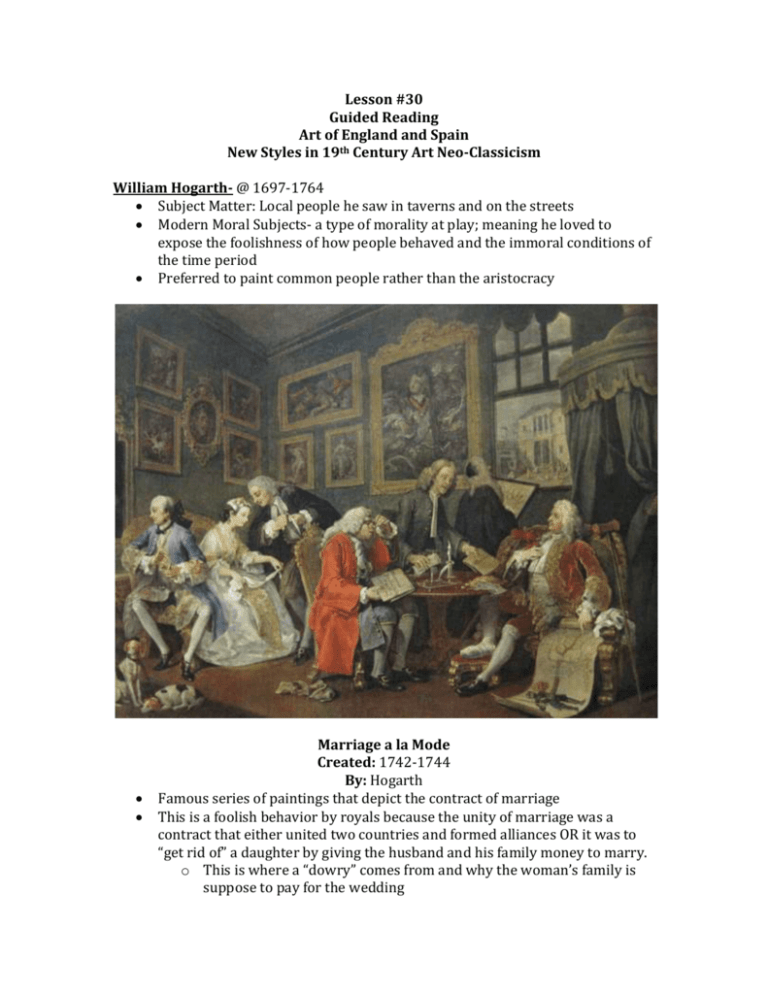
Lesson #30 Guided Reading Art of England and Spain New Styles in 19th Century Art Neo-Classicism William Hogarth- @ 1697-1764 Subject Matter: Local people he saw in taverns and on the streets Modern Moral Subjects- a type of morality at play; meaning he loved to expose the foolishness of how people behaved and the immoral conditions of the time period Preferred to paint common people rather than the aristocracy Marriage a la Mode Created: 1742-1744 By: Hogarth Famous series of paintings that depict the contract of marriage This is a foolish behavior by royals because the unity of marriage was a contract that either united two countries and formed alliances OR it was to “get rid of” a daughter by giving the husband and his family money to marry. o This is where a “dowry” comes from and why the woman’s family is suppose to pay for the wedding Portrait Paintings- popular with the aristocracy in England during the 18th century Came about because of the Protestant Reformation o The Church reformers were against the use of religious images o Portrait painting became popular with the growing aristocracy Nobles or wealthy upper class peoples would commission or hire artists to create portraits of themselves, their family, etc. Sir Joshua Reynolds- @ 1723-1792 One of the more popular portrait painters during the 18th century Picture to the left: Self-Portrait of Reynolds Thomas Gainsborough- @ 1727-1788 Painted portraits for King George III and his queen Received many royal commissions because he worked with the King o Became the royal families favorite painter Self-Portrait of Gainsborough By: Gainsborough Created: 1759 Jonathan Buttall: The Blue Boy By: Gainsborough Created: 1770 Sir Christopher Wren- @ 1632-1723 Known at first for being an accomplished architect o Designed many of the buildings in London St. Paul’s Cathedral was designed by Wren and is located in London Influenced by the Italian Renaissance and the Baroque Periods Great Fire of 1666- Fire that burned down and destroyed most of London o Burned for four (4) days o Destroyed 89 churches o Destroyed 14,000 homes Wren was named by the royal commission to rebuild most of the city Above: The images above are of St. Paul’s Cathedral located in London England. Notice how the columns are reminiscent of the Greek Classical Period being Iconic Style. The Italian Renaissance also inspires it by having a large dome. The interior is more elaborate and embellished. Francisco Goya- @ 1746-1828 Spanish artist First style resembled the Rococo style o Painted for the Spanish King Charles IV and created portraits of the royal family Switched styles, now painted like the artists Velazquez and Rembrandt The Duchess of Alba Created: @ 1797 By: Goya The Parasol Created: @ 1777 By: Goya The Family of Charles IV Created: 1800 By: Goya The Royal family is gathered to watch Goya paint them The royal family isn’t depicted as being idolized. Goya painted them as if he didn’t like them or he wasn’t happy to paint them Goya is seen on the far left by the canvas The 3rd of May, 1808 Created: 1814 By: Goya Subject Matter: French Suppression of Spain Most famous painting by Goya The people on the left are from Spain and the people on the right are French Revolutionists Dramatized by the use of light Vocabulary: Academies- Schools that taught art with emphasis on ancient classics Salons- Annual Parisian (Paris) exhibitions of artwork. Extremely elite and only accepted the most popular or socially acceptable works of art Death of Marat- a painting created by Jacques-Louis David that depicts the assassination of French Revolutionary Leader. Intelligentsia- intellectuals who form an artistic, political or social vanguard (basically a club for social elites that have the same views)
